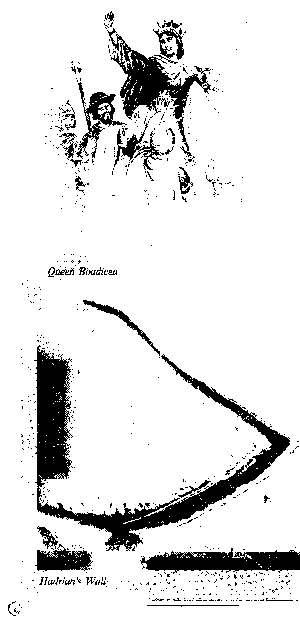
8
London is a Celtic name, but many towns that Romans built along their roads – Lancaster, Winchester,
Chichester, etc. have the Latin component "castra"– a camp, a fortified town.
London was the centre of Roman Rule in Britain, it was walled, the Thames was bridged; and straight paved
roads (Roman Roads,– that are as straight as a die) connected London with garrison towns.
Under the Emperor Hadrian in 120 AD a great wall was built across Britain between the Tyne and the
Solway to protect the Romans against the attacks of Scots and Picts.
Hadrian's wall was a vast engineering project and is a material monument of the Roman times alongside with
roads, frescoes and mosaics on the villas and baths (in the city of Bath).
The Romans also brought Christianity to Britain and the British Church became a strong institution.
The native language absorbed many Latin words at that time.
By the fifth century the Roman Empire was beginning to disintegrate and the Roman legions in Britain had to
return back to Rome to defend it from the attacks of the new waves of barbaric invaders. Britain was left to
defend and rule itself.
Acceding to the writing of Venerable Bede, an English monk, barbaric teutonic tribes of Angles, Saxons and
Jutes were making raids against the British throughout the fifth and sixth centuries. The British Celts tried to
check the Germanic tribes, and that was the period of the half-legendary King Arthur and his knights of the
Round Table who defended Christianity against the heathen Anglo-Saxons.
The Germanic invaders first arrived in small groups throughout the
fifth century but managed to settle and
oust the British population to the mountainous parts of the Isle of Great Britain.
The Anglo-Saxons controlled the central part of Britain which was described as England while the romanized

